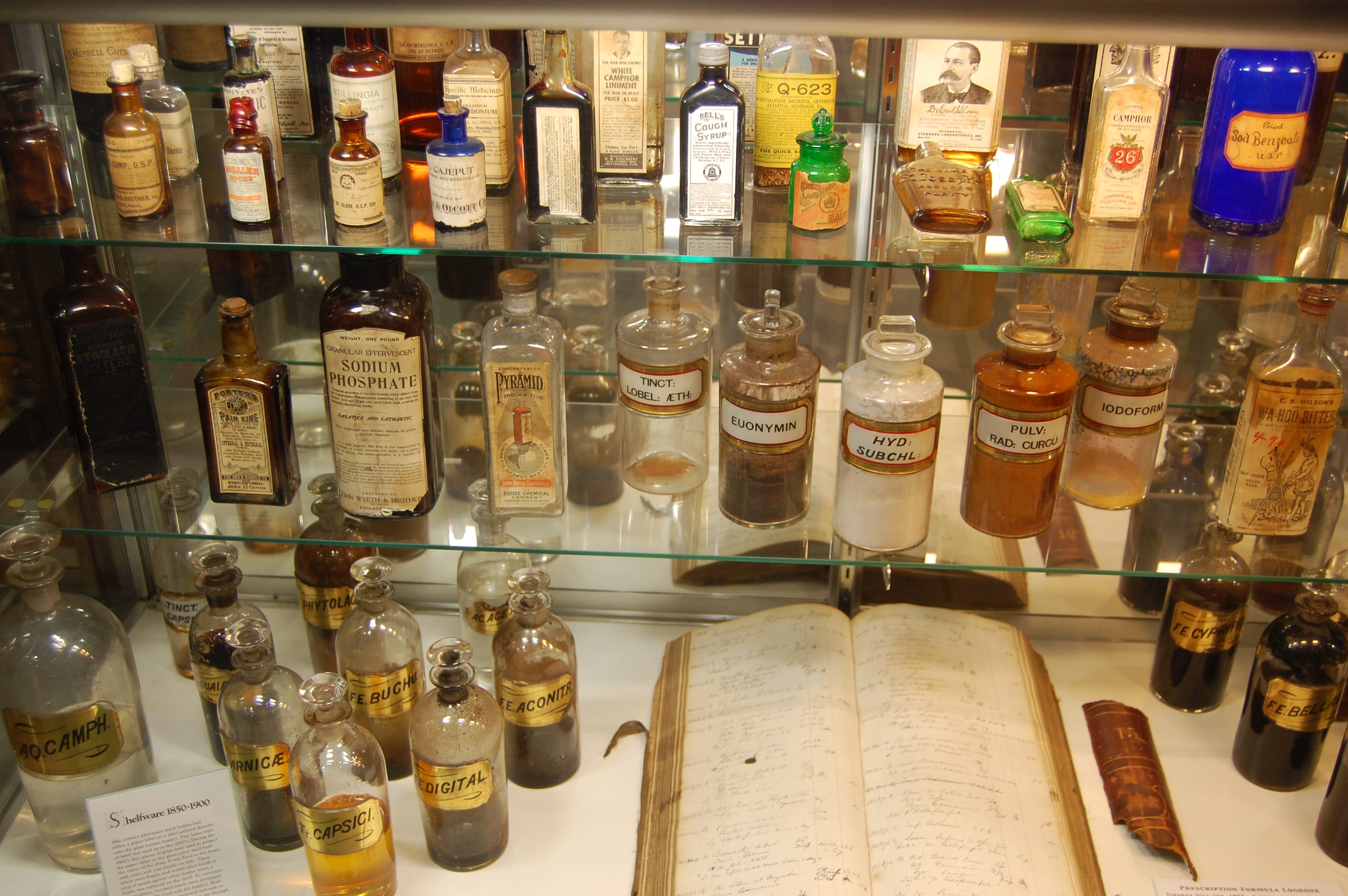We’re all familiar with the scenes in old Western films and show in which a charlatan comes to town selling a cure-all remedy to the townspeople that will magically heal everything from arthritis to wrinkles.
But while this image is part of a fuzzy, almost mythical, medical past, there’s a way to relive not only that part of medical history but others as well at the Health Museum of the Health Professions Division.
Located on the first floor of the Terry Administration Building, the museum features hundreds of medical artifacts from medical tools and microscopes to cigarette ads and from fake teeth to old boxes of toothpaste.
“The items that you see are so rare,” said Curator Cynthia Magalian Tupler. “Mostly everything today is just manufactured in a different way. Pieces are disposable and they’re made of plastic. Many of our artifacts at the museum were handmade.”
Other artifacts include tools like an Edison lightbulb, an optometrist’s chair, nurses’ caps, and even a human skeleton used in a medical school in 1910. There’s even bahnkes cups, which are used in cupping therapy, that date from the early 1600s. One of the pieces is a pharmacy prescription logbook from 1887.
“When you think about it, there was only one pharmacy in Boston at that time, so a lot of these prescriptions were filled for the descendants of our founding fathers,” Magalian Tupler said. “It’s an amazing piece of history.”
The museum was started in 1996 by Tupler’s father Paul Magalian, who was a dean emeritus of the pharmacy school and had a dream of starting a museum. He started out with pharmacy items. Now it has artifacts representing all the HPD colleges.
Magalian Tupler became curator in 2006 after her father’s passing.
“The school has been really gracious to me because they knew my father, so it’s great to continue the work and be with people who knew him,” Tupler said. “And it was healing for me to still be able to continue my father’s legacy. It’s just so important to me. It was an easy decision and it still is.”
Her father founded the museum with just a few cases from his own collection. Now, there are more than 35. As curator, Magalian Tupler manages all the artifacts, including those in storage, and rotates the displays.
“I try to be fun with it,” Tupler said. “When I have fake teeth, I’ll put dental floss in it. It’s delightful to display things to make it look more interesting and appealing to draw people in so they can learn.”
She also gives tours of the museum. Magalian Tupler said University School students who tour the museum “love it.”
“I show them a piece from the past and one that represents the future and I show them a piece from each of the schools,” Magalian Tupler said. “So that they understand what it was like in the past and where we’ve come. It gives them a historical perspective.”
The museum is important for all of the HPD. As Magalian Tupler said, “There’s always something for someone.”
“I think it’s important no matter what profession you’re in to understand history because you really have to understand your past to understand your future, and I think that’s really what it’s about,” Magalian Tupler said.
The museum receives donations from students, doctors, scientists and even visitors. A recent addition includes medical almanacs from the late 1800s. With so many interesting pieces, Tupler finds it hard to choose a favorite as every piece is special to her.
“I’m so passionate about the museum that everything’s important,” Tupler said. “Every little piece of history plays a role and I get excited every time someone brings something new to me.”
For Magalian Tupler, the museum brings the joy of knowing she is taking care of the artifacts for the future.
“I feel like I really am a guardian — to preserve these artifacts and make sure they’re taken care of and displayed properly to make it inviting for visitors so that they can learn,” Magalian Tupler said.
The very idea of preservation implies a future and for Magalian Tupler, that future includes both preservation and expansion.
“I want people to walk away learning each time they come here,” she said. “I hope that I can continue to receive donations and that I can just keep up the work and so that people continue to come in here and walk away with something that they didn’t think about before.”


